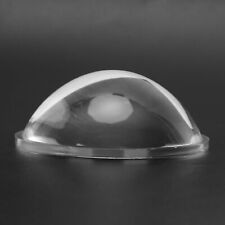
Physicists at Harvard have created an ultrathin, flat lens that focuses light without imparting the distortions that occur with conventional lenses. At a mere 60 nanometers thick, the flat lens is essentially two-dimensional, yet its focusing power, according to the researchers, approaches the ultimate physical limit set by the laws of diffraction.
The new lens is completely scalable and simple to manufacture, explained lead researcher Federico Capasso in the journal Nano Letters. “We’re presenting a new way of making lenses,” he said. “Instead of creating phase delays as light propagates through the thickness of the material, you can create an instantaneous phase shift right at the surface of the lens. It’s extremely exciting.”
Capasso and his collaborators created the flat lens by plating a very thin wafer of silicon with a nanometer-thin layer of gold. Next, they stripped away parts of the gold layer to leave behind an array of V-shaped structures, evenly spaced in rows across the surface.
When light is shone onto the flat lens, these V-structures act as “nanoantennas” that capture the incoming light and hold onto it briefly before releasing it again. Those delays, which are precisely tuned across the surface of the lens, change the direction of the light in the same way that a thick glass lens would.
Importantly, the flat lens eliminates the optical aberrations such as the “fish-eye” effect that occur with conventional lenses. Astigmatism and coma aberrations also do not occur with the flat lens, so the resulting image or signal is completely accurate and does not require any complex corrective techniques.

A micrograph of the flat lens (diameter approximately 1 mm) made of silicon. The surface is coated with concentric rings of gold optical nanoantennas (inset shows nanoantennas magnified) which impart different delays to the light traversing the lens. The colored rings show the magnitude of the phase delay corresponding to each ring.
Capasso said the array of nanoantennas, dubbed a “metasurface,” can be tuned for specific wavelengths of light by simply changing the size, angle, and spacing of the antennas. “In the future we can potentially replace all the bulk components in the majority of optical systems with just flat surfaces,” added co-researcher Francesco Aieta.
Related:
Discuss this article in our forum
Cheap-and-cheerful pinhead camera doesn’t need lens
Flexible Electronics Melded With Contact Lens Creates Bionic Eye
MIT Created Fiber Web Sees Everything
Artificial Eye Borrows From Nature


















Comments are closed.